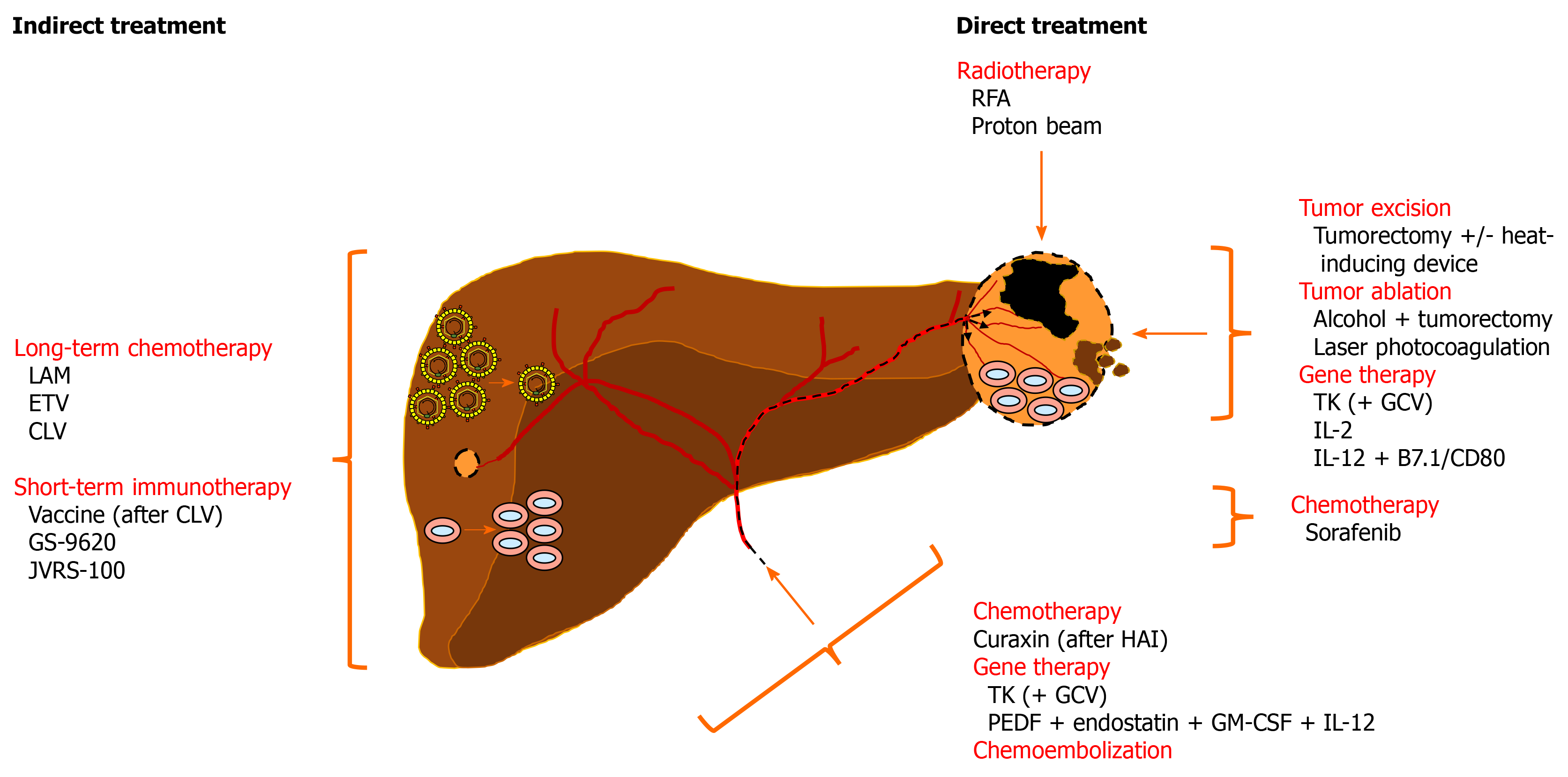Copyright
©The Author(s) 2021.
World J Gastrointest Oncol. Jun 15, 2021; 13(6): 509-535
Published online Jun 15, 2021. doi: 10.4251/wjgo.v13.i6.509
Published online Jun 15, 2021. doi: 10.4251/wjgo.v13.i6.509
Figure 1 Schematic presentation of woodchuck hepatitis virus-induced liver disease progression and detection of tumors within woodchuck liver.
A: Neonatal woodchucks are experimentally infected with woodchuck hepatitis virus (WHV) to model vertical hepatitis B virus transmission in humans; B: WHV infection progresses to chronic hepatitis B in adult woodchucks after approximately 1 year; C: Chronic WHV carrier woodchucks develop liver tumors during the next 1-1½ years. A focus of altered hepatocytes (FAH) in liver (top) and an undifferentiated liver tumor (bottom) are shown; D: Localization of liver tumors by ultrasonography (top) and computed tomography (middle). The liver of a woodchuck with two larger hepatocellular neoplasms (HCC) is shown (bottom). With permission from Elsevier, pictures shown in C were reprinted from: Tennant BC, Toshkov IA, Peek SF, Jacob JR, Menne S, Hornbuckle WE, Schinazi RD, Korba BE, Cote PJ, Gerin JL. Hepatocellular carcinoma in the woodchuck model of hepatitis B virus infection. Gastroenterology 2004; 127(5): S283-S293. Copyright ©American Gastroenterological Association 2004. Published by Elsevier[37]. WHV: Woodchuck hepatitis virus.
Figure 2 Woodchuck hepatitis virus-induced hepatocarcinogenesis in woodchucks.
After infection of normal hepatocytes, woodchuck hepatitis virus (WHV) replicates via cccDNA and produces high loads of intracellular and circulating viral proteins (WHsAg, WHeAg and WPreC) that interfere with the antiviral immunity. The deficient immune response is unable to clear WHV from infected liver cells but causes inflammation. WHsAg accumulates in hepatocytes and gives rise to ground glass hepatocytes. WHV also integrates into the chromosomal DNA of hepatocytes via double-stranded linear (dsl) DNA leading to oxidative stress, oxidation-dependent cellular DNA breakages, insertional mutagenesis, chromosomal alterations, and protooncogene activation. WHsAg and WHV X antigen (WHxAg) are produced from viral DNA integrants. Integrant- and replication-derived viral proteins activate cellular proteins, such as transcription factors, that support the oncogenic process. The continued liver inflammation leads to cell degeneration and regeneration and facilities accumulation of genetic and epigenetic defects in hepatocytes. Individual hepatocytes with critical mutations and low WHV replication and/or antigen presentation escape immune surveillance and their clonal outgrowth results in FAHs that further develop into liver tumors and HCC. CccDNA: Covalently-closed circular DNA; Dsl DNA: Double-stranded linear DNA; FAH: Focus of altered hepatocytes; HCC: Hepatocellular carcinoma; WHV: Woodchuck hepatitis virus.
Figure 3 Overview of therapeutic interventions assessed in woodchucks with liver tumors for the treatment of human hepatocellular carcinoma.
Indirect treatment of chronic WHV carrier woodchucks with nucleos(t)ide analogs or immunomodulators reduces viremia or activates antiviral and anticancer immune responses, respectively, that delay or prevent HCC onset. Direct treatment of hepatic neoplasms by radiotherapy, excision and ablation, gene therapy, or chemotherapy induce apoptosis or necrosis of tumor cells and/or activate an intratumoral, anticancer immune response that result in partial tumor remission. Chemoembolization-mediated anticancer effects have not been evaluated in woodchucks so far. See text for more details. B7.1/CD80: Costimulatory molecule; CLV: Clevudine; ETV: Entecavir; GCV: Ganciclovir; GM-CSF: Granulocyte-macrophage colony-stimulating factor; GS-9620: Toll-like receptor 7 agonist; HAI: Hepatic artery infusion; IL-12: Interleukin 12; JVRS-100: Complex of non-coding plasmid DNA and cationic liposomes; LAM: Lamivudine; PEDF: Pigment epithelium-derived factor; RFA: Radiofrequency ablation; TK: Thymidine kinase.
- Citation: Suresh M, Menne S. Application of the woodchuck animal model for the treatment of hepatitis B virus-induced liver cancer. World J Gastrointest Oncol 2021; 13(6): 509-535
- URL: https://www.wjgnet.com/1948-5204/full/v13/i6/509.htm
- DOI: https://dx.doi.org/10.4251/wjgo.v13.i6.509











